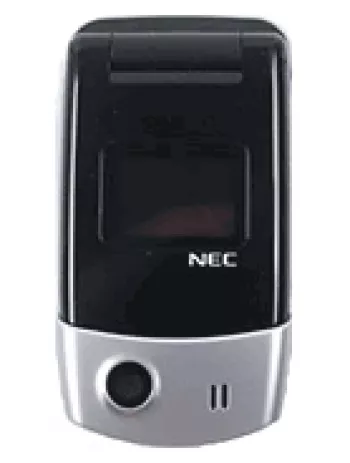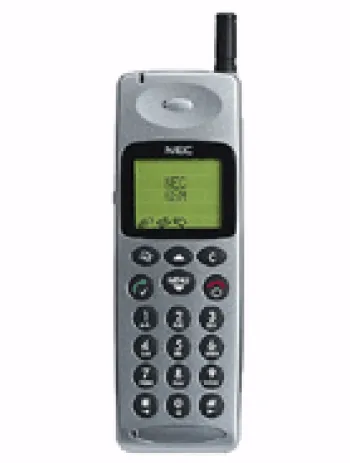
Overview
The NEC DB2000 is a feature phone that was launched in 1999. It represents a period when mobile technology was more focused on providing reliable and straightforward communication without the features we consider standard today, such as cameras and advanced internet connectivity. Despite being discontinued, the NEC DB2000 holds a significant place in the history of mobile devices due to its distinctive features for its time.
Network and Connectivity
The NEC DB2000 operates on GSM technology, supporting 2G bands specifically at GSM 900 and 1800. At the time of its release, these bands were crucial for ensuring widespread connectivity and reliable voice communication across various regions. The phone does not support GPRS or EDGE technologies, meaning it lacks data capabilities beyond simple SMS messaging, which aligns with its classification as a basic feature phone.
Design and Build
In terms of design, the NEC DB2000 features a straightforward and compact build, with dimensions of 131 x 41 x 19 mm and a volume of 100 cc. It weighs 130 grams, making it a relatively lightweight device for easy portability. The phone uses a Mini-SIM, which was the standard at the time, and is housed in a metallic-colored body. The aesthetic is classic for mobile phones of the late 1990s and early 2000s.
Display Characteristics
The NEC DB2000 is equipped with an alphanumeric display, which was typical for phones of this era. The screen resolution allows for displaying 4 lines of text with up to 12 characters each, sufficient for reading messages and navigating the phone’s menu. Its basic display reflects the straightforward communication focus of the device.
Sound Features
This phone does not include a loudspeaker or a 3.5mm headphone jack, and it uses monophonic ringtones for alerts. Vibration alerts are also available, which was a popular feature for discreet notifications. The sound capabilities are basic, catering to essential communication needs without additional media functionalities.
Memory and Storage
Memory specifications include provisions for storing call records with a capacity for 5 dialed, 5 received, and 5 missed calls, which aligns with its focus on basic telecom functions. The device lacks expandable storage options, as it does not have a card slot, and it does not provide intricate phonebook functionalities that became common in later phones.
Battery and Performance
The NEC DB2000 uses a removable Li-Ion battery with a capacity of 550mAh. The battery life, considering standby and talk time, ranges between 150 to 300 hours on standby and 200 to 480 minutes of talk time. These specifications reflect an efficient power usage designed to maximize the duration between charges, a critical feature for users at the time when constant charging accessibility was less prevalent.
Communication Features
As a feature phone, the NEC DB2000 mainly focuses on voice calls and SMS messaging. It does not support wireless technologies like Bluetooth or WLAN, nor does it have positioning services or radio capabilities. The lack of USB connectivity denotes its sole focus on telephony rather than data exchange or additional peripherals.
Other Notable Features
Though limited by modern standards, the NEC DB2000 includes a suite of essential tools: a clock, an alarm, and support for 17 languages. It does not provide gaming capabilities, nor does it support Java applications, affirming its focus on basic functionalities. The emphasis on linguistic diversity highlights an understanding of a global or multi-regional market approach for its time.
Conclusion
The NEC DB2000, while now obsolete, offers a glimpse into the early days of mobile communication where the emphasis was on portability, long battery life, and essential communication functions. It served as a dependable communication tool that set the stage for the powerful devices we use today, and looking back, it reflects the technological advancements and shifts in user expectations over the years.
Key Features of NEC DB2000
- GSM 900 / 1800 Network Compatibility
- Compact Dimensions: 131 x 41 x 19 mm
- Lightweight: 130 g
- Alphanumeric Display with 4 x 12 Characters Resolution
- Basic Call Management: Stores 5 Dialed, 5 Received, 5 Missed Calls
- Vibration and Monophonic Ringtones for Alerts
- SMS Messaging Capability
- Supports 17 Languages
- Removable Li-Ion Battery with a Stand-by Time of 150-300 Hours and Talk Time of 200-480 Minutes
- Metallic Color Option
Disadvantages of NEC DB2000
- No GPRS or EDGE support
- Discontinued model
- Limited display resolution with only 4 x 12 characters
- No expandable memory card slot
- Very limited call records storage (5 dialed, 5 received, 5 missed)
- No camera capabilities
- No loudspeaker
- Lacks a 3.5mm audio jack
- No WLAN or Bluetooth connectivity
- No positioning or GPS support
- No FM radio
- Limited to monophonic ringtones
- No game support
- No Java capabilities
View Also
More Phones
All Rights Reserved +14266 Phones © Mobilawy 2025

























